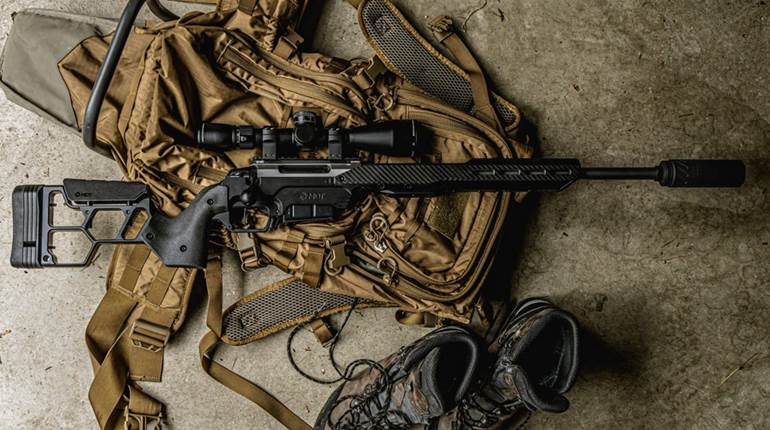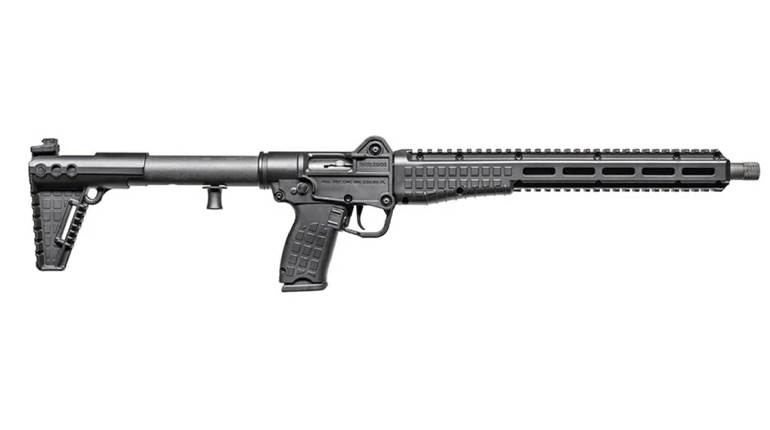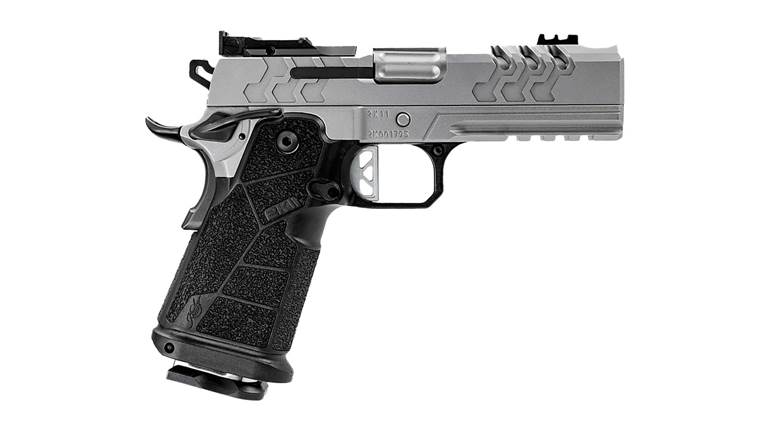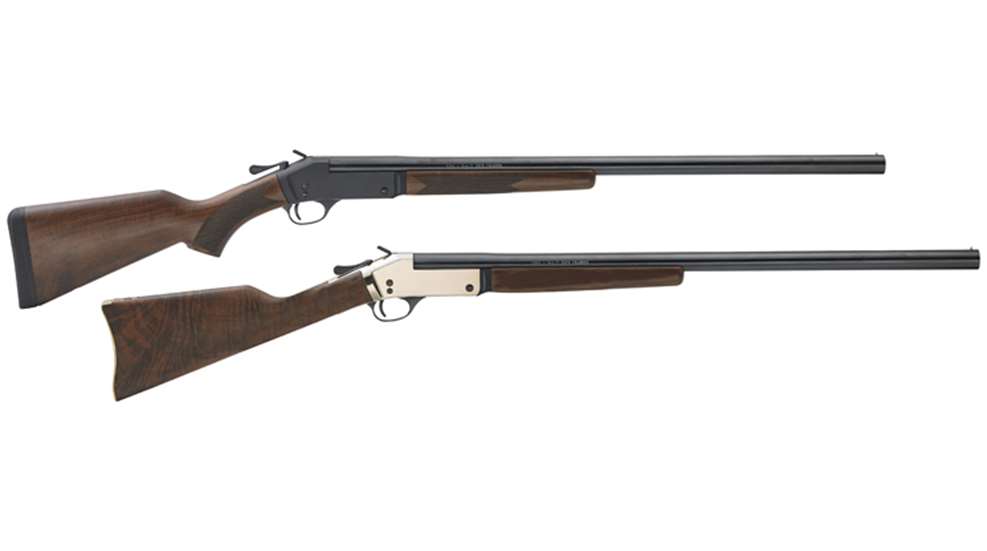
Single-shot rifles and shotguns seem to fall into two categories these days. On the one hand we have the high-end replicas and modern interpretations of early cartridge guns such as the Uberti 1885 High Wall and Ruger No. 1 rifles. These fine guns are rich in heritage and hardwood but have price tags starting at around $1,000 or more. At the other end of the spectrum are the ruggedly built and budget-friendly polymer stocked youth and utility models such as the Savage Rascal and CVA Scout. These guns will certainly get the job done but don't count on them winning a beauty contest.
Henry Repeating Arms recently stepped into the single-shot market with a series of four classically designed offerings consisting of two rifles and two shotguns. Like the company's popular lever-actions, these break-action models are all dressed up with the company's signature American hardwood stocks. Customers have a choice of polished brass or matte black steel receivers, each of which comes with a distinctive set of furniture and features.

As I looked over these new Henry offerings, with their blued-steel barrels and handsome hardwood stocks, my first impressions led me to believe this series would sport price tags in the same range as other fancy single shots. It was a pleasant surprise to find out that these Henrys are less than half the price of the competition with suggested retail prices from $427 to $549, depending on the model selected. As the time at the range would demonstrate, Henry didn't sacrifice any reliability or utility in the process of making these shotguns and rifles easy on the eyes.

All four break-action models share several features in common. They are made in the U.S. at Henry's Rice Lake, Wis., facility. They are fitted with single-stage, single-action triggers paired with exposed hammers that must be manually cocked for each shot fired.

The guns' safety systems consist of a rebounding hammer. After the hammer is manually cocked and fired by fully depressing the trigger, the hammer rebounds and locks back away from the firing pin. When the hammer is in this position, the trigger is also locked in place and will not move until the hammer is cocked again. There are no other safeties to encumber the operation of the gun.
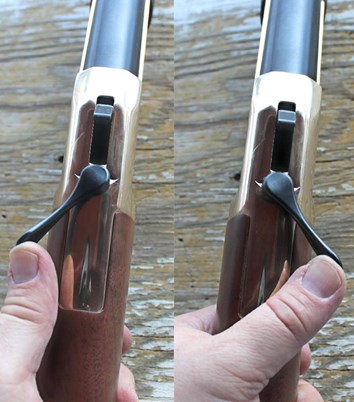
The ambidextrous, dual-direction release lever can be pressed to the right or the left when opening the action. This is a nice touch since most break-actions have levers that swing in only one direction. The hammers are grooved to accept Henry's hammer extensions (sold separately) which make cocking the guns much easier when an optic is installed.
The appointments are blued steel, including the smooth-faced trigger, trigger guard and receiver screws. The round profile blued steel barrels are screwed into the fore-end which means they can be removed from the receiver for cleaning since there is no quick-release button like those found on some shotguns.
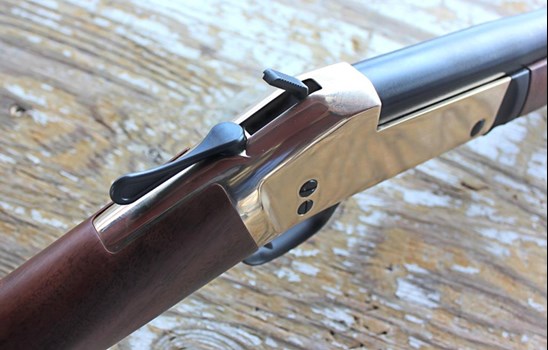
The example of the high-polish brass receiver models requested for this review was the 28" barrel 12-ga. (H015B-12) shotgun. The receiver is not actually made of brass (which is soft, heavy and tends to stretch out of spec eventually) but a much more durable proprietary brass-plated alloy called Brasslite, which is treated with a clear coating to preserve its mirror finish. A steel insert houses the firing pin and supports the base of each shotgun shell when fired.
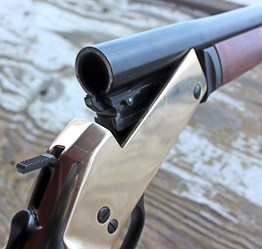
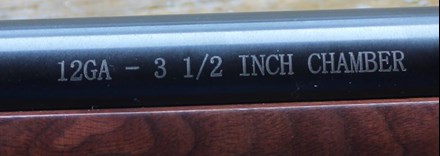
The shotgun is chambered to accept up to 3½" long 12-ga. shells. This chamber size paired with a hinged action allows it to fire just about every size and power level of 12-ga. shell on the commercial market from the soft shooting 1 3/4" Aguila Mini Shells to the longest magnum shells available. The chamber is fitted with an ejector which kicks spent shell casings out and over the shoulder of the individual pulling the trigger.
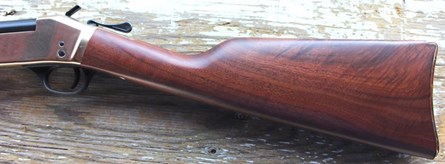
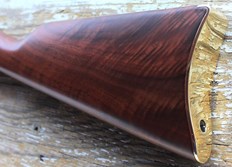
The shoulder stock has a straight English-style wrist, a smooth finish and an adult-size 14" length-of-pull (LOP). The fore-end is smooth with a narrow profile. The butt of the stock is fitted with a highly polished Brasslite buttplate that matches the receiver.

The sight system consists of a simple, traditional muzzle-mounted brass bead. The barrels of the 12 and 20-ga. models are threaded to accept removable chokes with the common and easy to find Rem-Choke style threading. This gun shipped with one Modified choke installed along with a choke wrench.
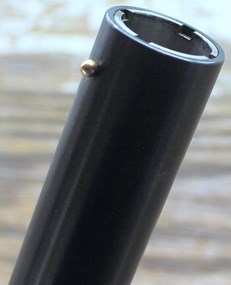
For the carbon steel alloy receiver side of the line, I went with the 22" barrel .223 Rem./5.56 NATO (H015-223) rifle. The blued finish of the receiver blends in seamlessly with the barrel and appointments.
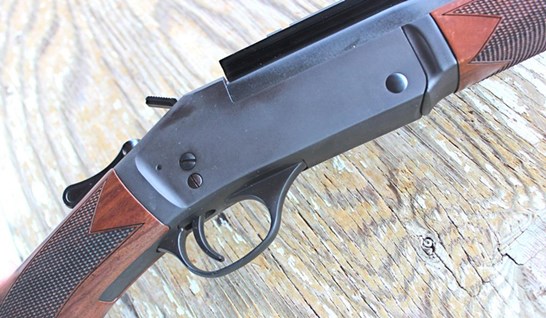
The chamber is fitted with an extractor. As the barrel swings open, the spent cartridge case is pressed out of the chamber about a quarter of an inch so that it can be manually removed.
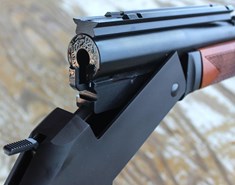
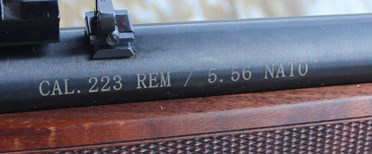
The top of the barrel is drilled and tapped to accept a Weaver 82 scope base (sold separately), which was installed for this review. In addition to the optics option, these rifles ship with a set of useful iron sights.
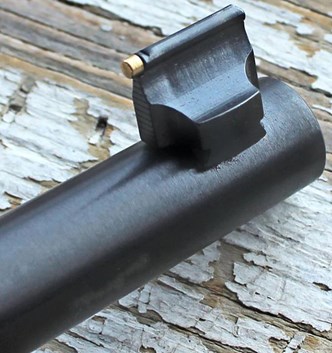
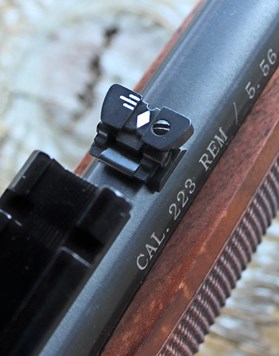
The dovetailed rear sight is a fully adjustable folding leaf paired with a dovetailed brass bead front sight. Thankfully, the rear sight does not need to be removed to install a scope (like some of the Henry lever models) but the scope base does block the view of the rear sight.
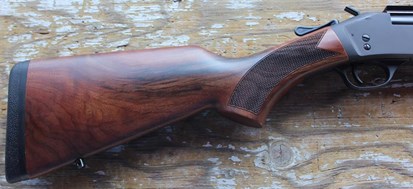
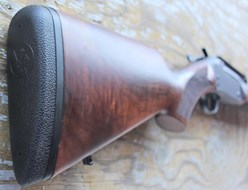
The American walnut pistol-gripped stock has a 14.25" LOP and a checkered gripping surface. The fore-end is checkered to match. The butt of the stock is capped off with a thick, soft recoil pad bearing the Henry logo. Sling swivel studs are installed at the factory.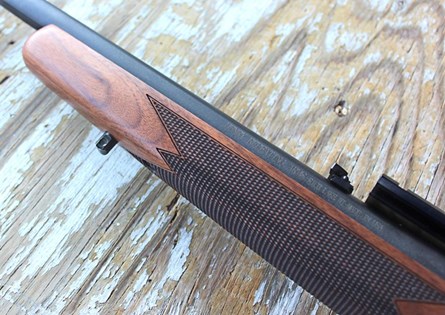
Both guns proved to be utterly reliable throughout the testing process at the shooting range. There was not a single malfunction of any kind. The fit and finish was typical of other Henry products, which is to say, top-notch. These guns are light, handy and swing beautifully.
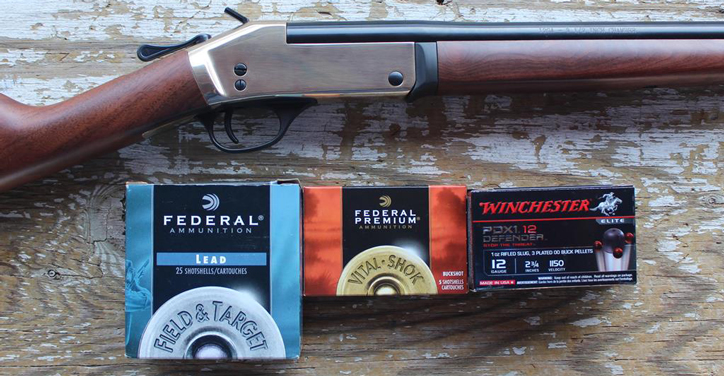
The shotgun was patterned with the Modified choke at 7 yards using Birchwood Casey Shoot N-C 18"x 12" silhouette targets. Federal's Field & Target 2 3/4" shell loaded with 1 1/8 oz. of #7½ Lead Birdshot at 1,200 f.p.s. printed a 5.5" pattern.
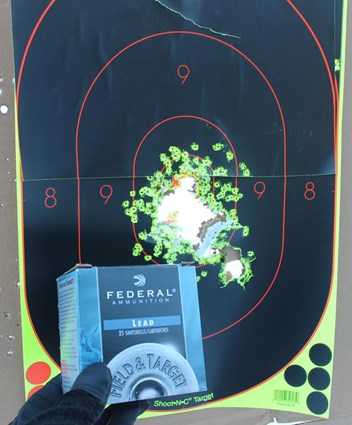
The Federal Premium Vital Shok 3" shell packed with 41 pellets of #4 buckshot at 1,100 f.p.s. yielded a pattern of 6".
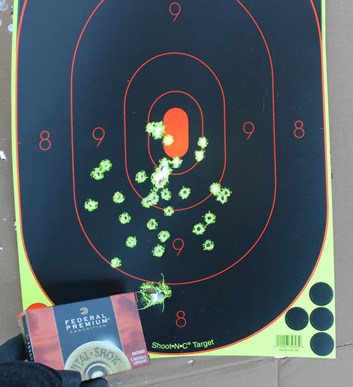
Winchester's PDX1 Defender 2 3/4" shell is topped with a 1 oz. rifled lead slug backed by three pellets of copper-plated 00 buck shot traveling at 1,150 f.p.s. The slug produced a central hit with the three buckshot pellets forming a 2" group around it.
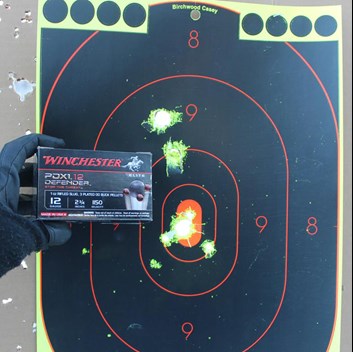
I originally planned to test fire the .223 Rem. rifle at 100 yards per our usual testing protocols. But on the day I took it to the range, that section was inaccessible due to inclement weather.
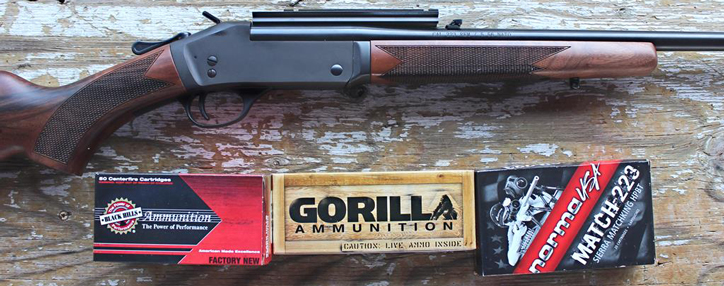
So, the rifle was fired at 50 yards from a benchrest using the same Bushnell Trophy Xtreme X30 2.5-10x44 with Multi-X Reticle scope that worked so well with the Henry Long Ranger earlier this year. It was a bit like taking a high performance sports car for a spin around a mall parking lot, but this rifle's accuracy potential was still easy to see in the targets.
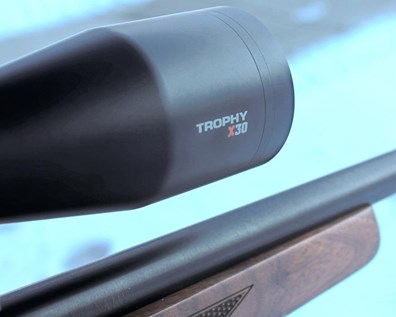
Black Hills Ammunition 60-gr. soft points printed a best five-shot group of 0.69" with a five group average of 0.77". Gorilla Ammunition's 69-gr. Sierra Match King open-tip match load yielded a best group of 0.61" with an average of 0.69". The best performer of the test set was Norma USA's 77-gr. Sierra Match King hollow point boat tail load with a best single group of 0.44" with an average of 0.53".

In our modern day shooting pursuits, which often consist of high-speed magazine dumps and testing out tactical solutions, it's easy to forget the sweet handling characteristics of a simple single-shot platform. The new Henry Single-Shot models exhibit the same level of quality and attention to detail that Henry’s technicians lavish on their lever-action models.
Like the lever guns, everything about the operations of the single-shots was smooth. Smooth trigger, smooth action, and smooth controls. And the quality and appearance of the American walnut stocks was, as usual, a step above that of the competition. As of this writing, the shotguns are available in 12-ga., 20-ga. and .410 Bore. The rifles are available chambered in .44 Rem. Mag., .223 Rem./5.56 NATO, .243 Win., .308 Win. and .45-70 Govt.
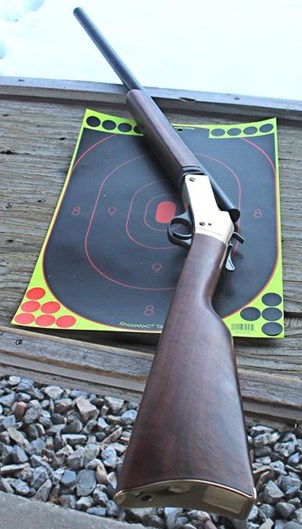
Specifications:
Manufacturer: Henry Repeating Arms
Model: H015B-12
Action: Break-Action Single Shot
Caliber: 12-ga., Up To 3½" Shells
Barrel: Blued Steel, Round Profile with Ejector
Receiver: Brass
Fore-end: Smooth American Walnut
Shoulder Stock: Straight Grip, Smooth American Walnut
Buttplate: Brass
Front Sight: Fixed Brass Bead
Rear Sight: None
Optics: None
Safety: Rebounding External Hammer
Locking Lever: Pivoting Dual-Direction
Trigger Pull: Single-Stage, 5 lbs. 8 oz. (As Tested)
Barrel Length: 28"
Overall Length: 43.5"
Length of Pull (LOP): 14"
Sling Swivel Studs: No
Weight: 6 lbs. 14.5 oz.
Capacity: 1 Round
Rifle Grooves: Smooth Bore
Choke: Removable Modified with Rem-Choke Type Threading
Accessories: One Removable Modified Choke, Choke Wrench, Owner's Manual
MSRP: $549
Model: H015-223
Action: Break-Action Single Shot
Caliber: .223 Rem. /5.56 NATO
Barrel: Blued Steel, Round Profile with Extractor
Receiver: Blued Steel
Fore-end: Checkered American Walnut
Shoulder Stock: Pistol Grip, Checkered American Walnut
Buttplate: Black Solid Rubber Recoil Pad
Front Sight: Dovetailed Brass Bead
Rear Sight: Dovetailed Fully Adjustable Folding Leaf
Optics: Drilled & Tapped for Scope Mount
Safety: Rebounding External Hammer
Locking Lever: Pivoting Dual-Direction
Trigger Pull: Single-Stage, 5 lbs. 12 oz. (As Tested)
Hammer Extension: Sold Separately
Barrel Length: 22"
Overall Length: 37.5"
Length of Pull (LOP): 14"
Sling Swivel Studs: Yes
Weight: 7 lbs. 2 oz.
Capacity: 1 Round
Twist: 1:9” RH
Rifle Grooves: 6
Accessories: Owner's Manual
MSRP: $427
Scope: Bushnell Trophy Xtreme X30 2.5-10x44 with Multi-X Reticle
Scope Mount: Weaver 82












